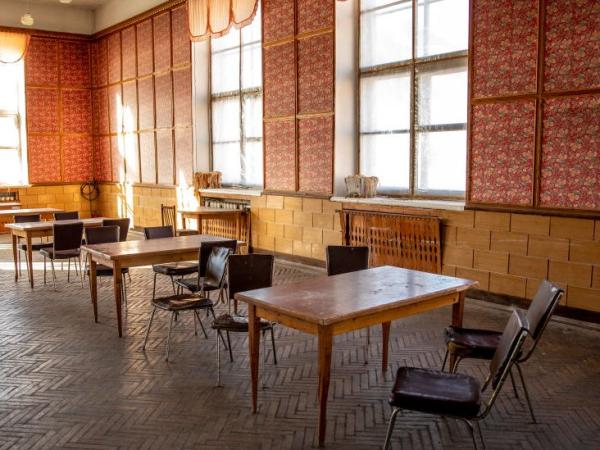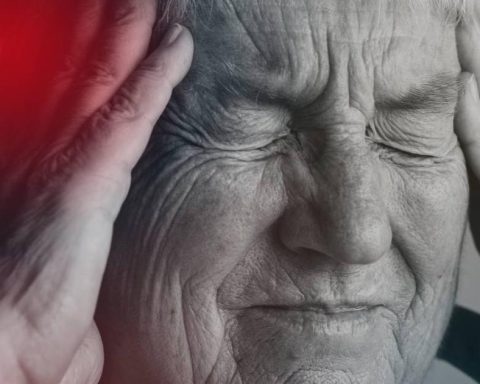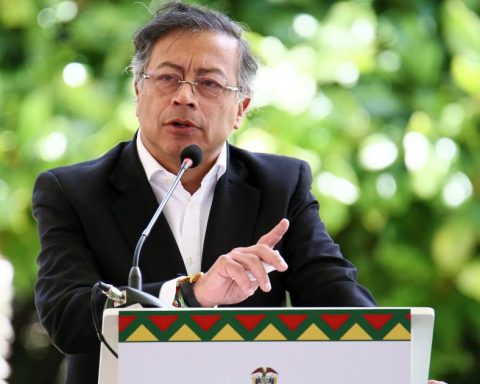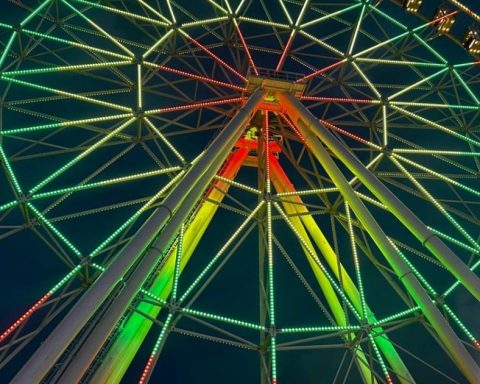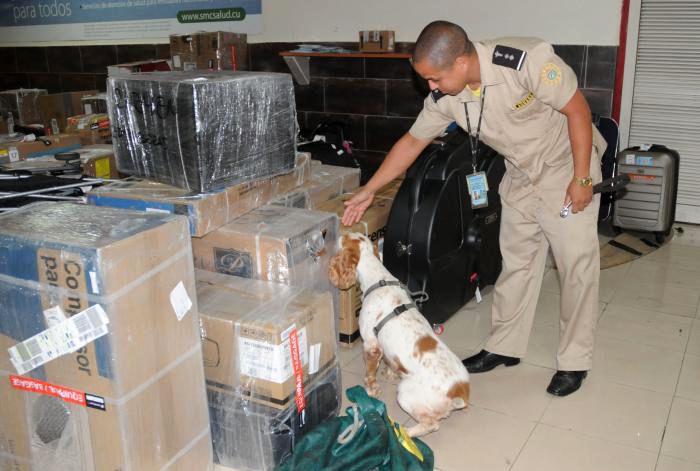The trip to Pyramiden, in the Norwegian archipelago of Svalbard, was a bit like going to the ends of the Earth.
I first flew to northern Norway, at the tip of the European continent. Next, I boarded another plane north of Longyearbyen, the capital of Svalbard, on the island of Spitsbergen, an island closer to the North Pole than to Oslo.
Then, just when you imagined you’d already reached the far north of the world, in a place where the sun doesn’t rise for four months of the year and doesn’t set for another four, a place where the arctic fox and reindeer roam the streets Svalbard, I went a little further.
It was the final stretch to the coal mining town, cut off from the world, or rather, the world as most of us know it.
I navigated the rough waters of the Arctic on the small tour boat that runs three times a week from Longyearbyen, scanning the horizon for polar bears. When we rounded the first promontory and turned to the north end, all was quiet.
Like cartoon caricatures of arctic birds, the puffins flew alongside the ship, a prelude to the large seabird colonies on the cliffs.
Clouds swirled around the snow-capped peaks and high valleys where the snow turned charcoal gray in midsummer, then turned stark white in the sudden rays of sunlight. I was amazed.
And then, on the other side of the waters almost covered with ice until well into summer, was Pyramiden.
Few arrivals convey the bewilderment caused by arriving at Pyramiden. To the east, through the icy summer waters of Billefjorden, the Nordenskjöldbreen glacier juts relentlessly into the sea, a reminder that more than 60% of Svalbard is made up of glaciers.
Stark under the summer clouds, elemental in its confluence of ice, water and rock, it was a symbol of arctic beauty.
Pyramiden itself is littered with the remains of coal mining: rusty steel beams and ironwork teetering at odd angles, the half-collapsed mine buildings turned to rubble, great mounds of black debris offering a post-apocalyptic vision.
Abandoned mining railways marked the steep slope to the north, while the grim uniformity of Stalinist-style buildings seemed to be doing their best to spoil the beauty around them. It could have been a setting for an Arctic Cold War thriller.
But there on the pier was Sergei Rubelev, waving enthusiastically in his white fishing sweater and beaming smile. Pyramiden may be a neglected outpost of the former Soviet empire, but Rubelev was, more than anything else, a human happy for company in his lonely place of vigil, and his welcome was warm.
Aside from winter snowmobile expeditions and the occasional supply plane, Pyramiden is cut off from the outside world for eight or nine months of the year; not long before my arrival, Rubelev had spent the winter here.
Starting in June or July, tourists descend on Svalbard’s capital, Longyearbyen (population: 2,400 people), on cruise ships and daily flights, with dozens of excursions and activities on offer, from dog sledding, kayaking and hiking to boat trips in search of walruses.
Among these excursions are the small tour boats that carry 10 to 15 travelers at a time (and sometimes supplies) to Pyramiden, numbers and weather permitting.
Boats sometimes drop off or pick up local scientists or hunters at isolated cabins along the way. Even in summer, ships sometimes can’t get through the ice, and weeks go by without one arriving. No wonder Rubelev was happy to see us.
It was the Swedes who first discovered coal at Pyramiden in 1910. At the time, the legal status of Spitsbergen (as Svalbard was then known) was under discussion; most of Norway’s Arctic neighbors considered Spitsbergen to be an international territory where they could do as they pleased.
In 1925, the nations of the Arctic and beyond signed the Treaty of Svalbard. Under the terms of the treaty, which remain in force to this day, the island archipelago belongs to Norway.
But Norwegian power here is not absolute, and the treaty states that “All citizens and all businesses of each nation under the treaty may become residents of and have access to Svalbard, including the right to fish, hunt or undertake any kind of maritime activity, industrial, mining or commercial activity”.
Taking advantage of Svalbard’s somewhat anomalous legal status under the treaty, Sweden sold Pyramiden to Stalin’s Russia in 1927 and it became one of two Russian outposts on Spitsbergen (the other, Barentsburg, is much closer to Longyearbyen).
These were coal mining towns (coal was the only reason they existed) that operated under the giant Soviet mining trust known as Arktikugol.
Although it’s hard to believe now, Pyramiden in the 1950s had more people living here (2,500) than live in Longyearbyen today. It even outlived the Soviet empire: its 60 km of mine shafts were still in use in the early 1990s.
However, it could not and did not last. The decline in coal production, coupled with the skyrocketing cost and logistics of maintaining a city in such an inhospitable location, sealed Pyramiden’s fate.
The mines closed in 1998 and, having no other reason to live here, the town was abandoned. Only a small staff of Russians like Rubelev remain to keep watch, though for what purpose it is unclear; it’s hard to imagine anyone staging a raid to take over this abandoned corner of Earth, and Rubelev wouldn’t be able to do much about it if they did, either.
As Rubelev led me down empty boulevards and past the facades of empty apartment blocks, a rifle slung over his shoulder to protect us from visiting polar bears, he smiled enigmatically when I asked if we were walking on Russian or Norwegian soil.
“Both. Neither. This land belongs to everyone and belongs to no one.” She paused for a moment, looking around at the cracked sidewalks and the Cyrillic slogans exhorting loyalty and extolling the virtues of the Soviet fatherland.
“If you want it, take it.” And then she laughed, a great laugh that I felt had built up in the lonely hours and days since the last boats had landed.
I had never been anywhere like Pyramiden. It is a daunting place, a cliché of human madness, a poignant and solemn empty monument to a fallen empire, all written large against a backdrop of stunning beauty.
A bust of Lenin watches over an overgrown square. In the gym with its broken glass, posters from the 1950s call for the patriotism of athletes to run faster and jump higher. Elsewhere, floorboards warped and creaked along hallways of dreary, monochromatic apartment blocks with faded brown wallpaper and worn brown carpets.
And yet the view from the windows is stunning. The high peaks of the Arctic surround the city, creating a glorious natural bowl by the water.
Icy winds wash away the land, revealing a scene made more beautiful when seen through the silhouette of a crumbling steel tower. Rising above the city was the pyramid-shaped mountain that gives the city its name.
And glaciers. Everywhere to the horizon, there were glaciers.
I asked Rubelev if he could see the beauty of Pyramiden and its surroundings. “When I’m here, I count the days until I can leave,” he replied. “But then when I’m back home in Russia, I miss this place and its silence.”
Hotel Tulpan’s tiny bar is a snapshot of Pyramiden as it once was. Almost the entire population of Pyramiden, seven, at the time of my visit, sat at the bar where Olga Kuznetsova poured shots of vodka and discussed news from faraway places.
To one side of the window, there were souvenirs — Lenin lapel pins, Karl Marx caps — that Kuznetsova sells to visitors every time a ship arrives in town. Kuznetsova’s father worked in the Pyramiden mines and she spent part of her childhood here. Was he nostalgic for Pyramiden’s past, I wondered?
“Sometimes, yes,” she replies in heavily accented English. “Sometimes it seems like life was simpler back then. But the mind can play tricks. Life here was hard. Now Pyramiden is like a house haunted by ghosts and that makes me sad,” she says.
“But regardless, I love it here. It’s a special place. It gets under your skin. Once that happens, it’s very hard to leave.”
Click here to read this note in its original version on BBC Travel.
Now you can receive notifications from BBC World. Download the new version of our app and activate it so you don’t miss out on our best content.
